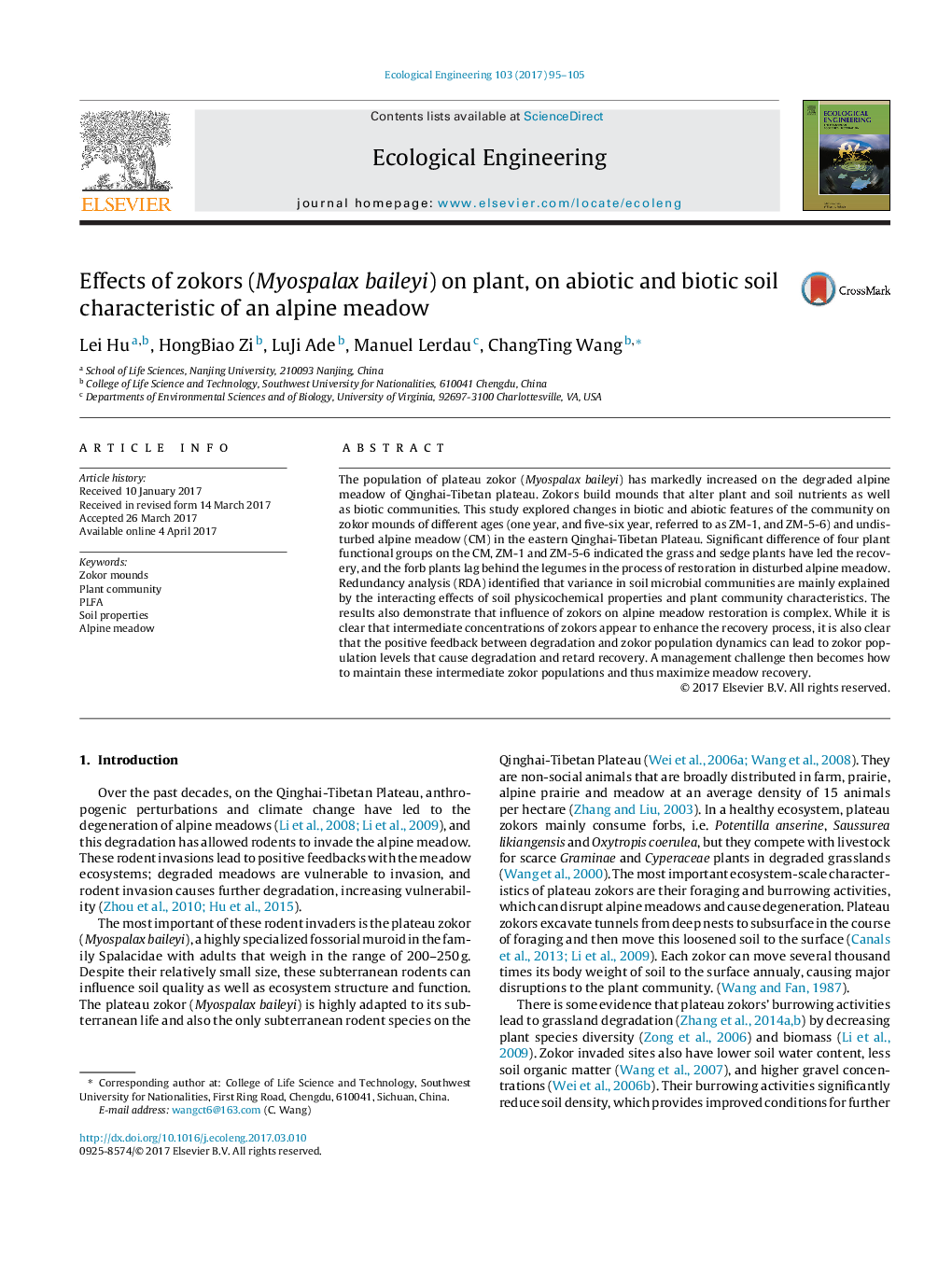| Article ID | Journal | Published Year | Pages | File Type |
|---|---|---|---|---|
| 5743567 | Ecological Engineering | 2017 | 11 Pages |
The population of plateau zokor (Myospalax baileyi) has markedly increased on the degraded alpine meadow of Qinghai-Tibetan plateau. Zokors build mounds that alter plant and soil nutrients as well as biotic communities. This study explored changes in biotic and abiotic features of the community on zokor mounds of different ages (one year, and five-six year, referred to as ZM-1, and ZM-5-6) and undisturbed alpine meadow (CM) in the eastern Qinghai-Tibetan Plateau. Significant difference of four plant functional groups on the CM, ZM-1 and ZM-5-6 indicated the grass and sedge plants have led the recovery, and the forb plants lag behind the legumes in the process of restoration in disturbed alpine meadow. Redundancy analysis (RDA) identified that variance in soil microbial communities are mainly explained by the interacting effects of soil physicochemical properties and plant community characteristics. The results also demonstrate that influence of zokors on alpine meadow restoration is complex. While it is clear that intermediate concentrations of zokors appear to enhance the recovery process, it is also clear that the positive feedback between degradation and zokor population dynamics can lead to zokor population levels that cause degradation and retard recovery. A management challenge then becomes how to maintain these intermediate zokor populations and thus maximize meadow recovery.
